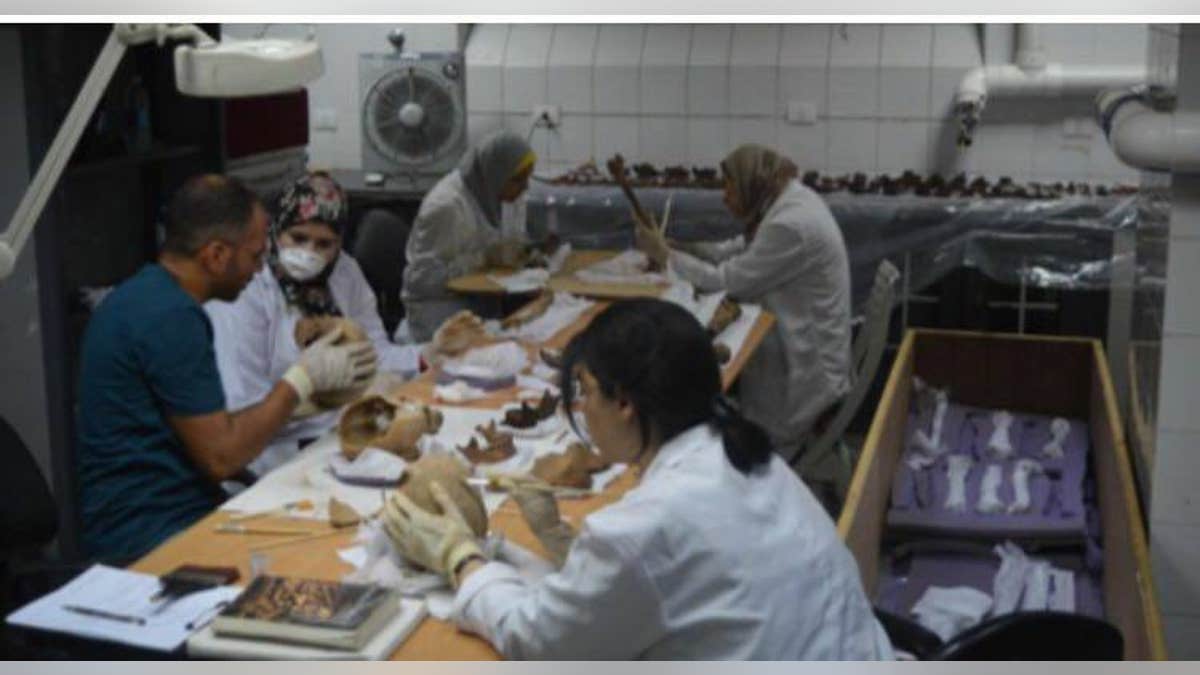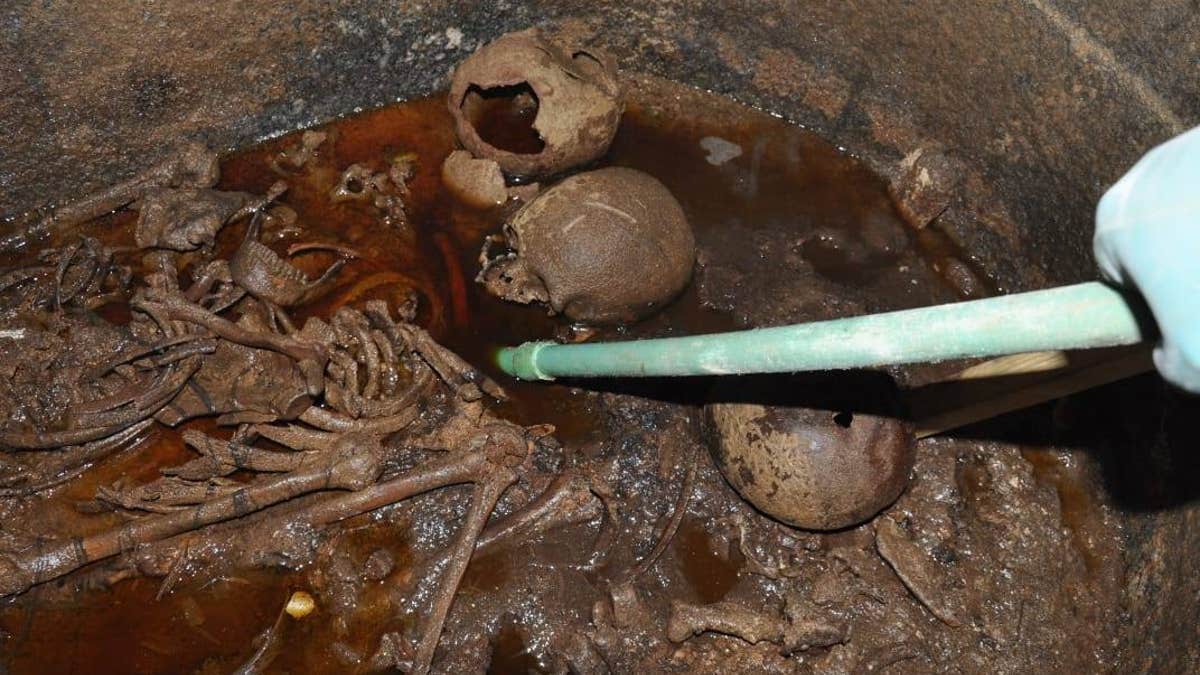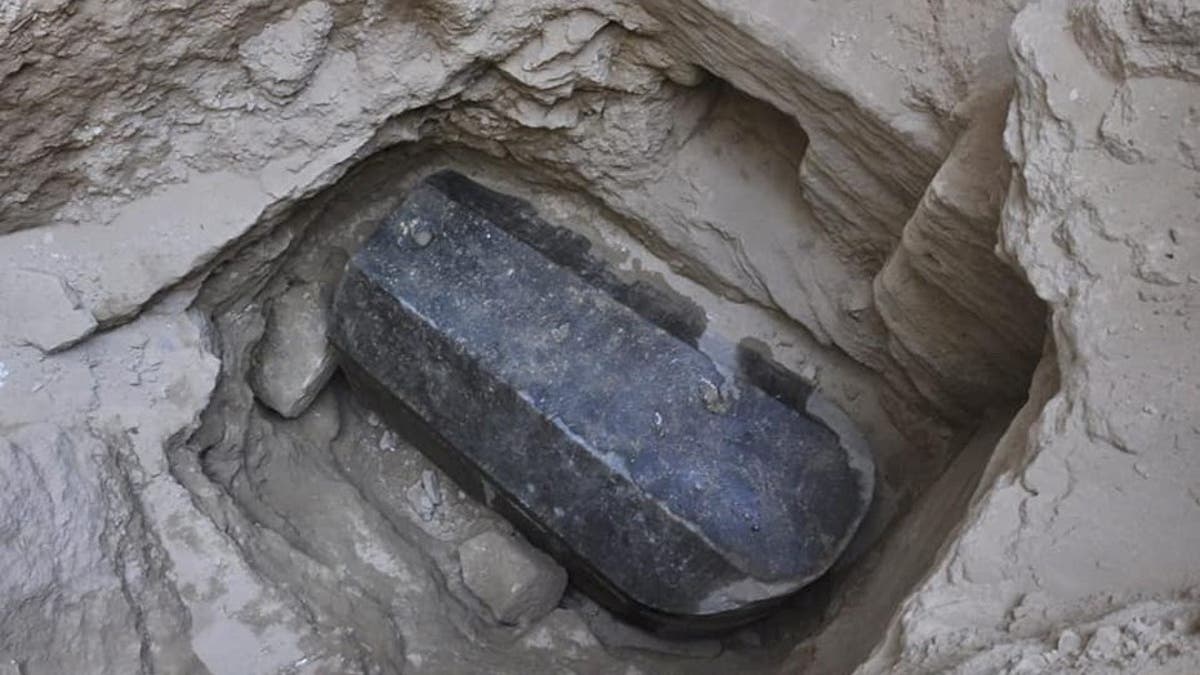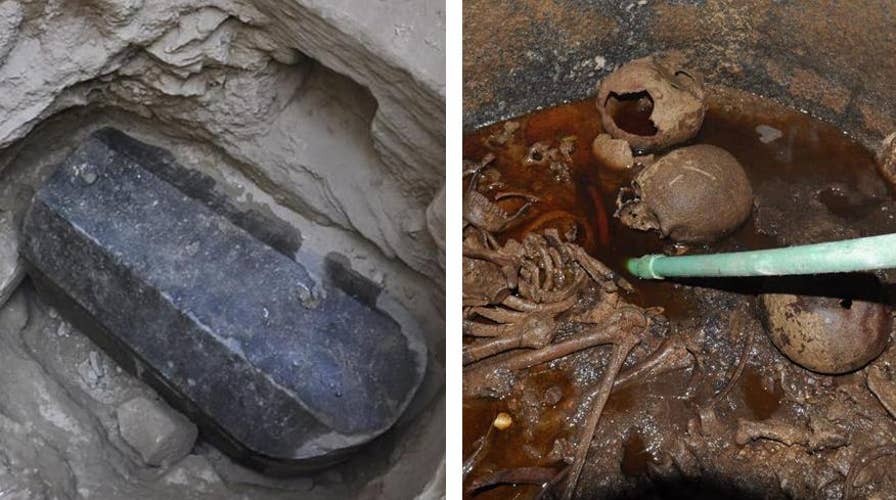‘Cursed’ ancient Egyptian sarcophagus opened
Archaeologists in Egypt have opened a massive black sarcophagus that is said to be ‘cursed.’ Inside they found three skeletons that will be studied.
Archaeologists in Egypt have unlocked the secrets of a mysterious ancient ‘cursed’ black granite sarcophagus.
The massive coffin, which was recently excavated in the city of Alexandria, was found to contain three skeletons and gold sheets with the remains. The tomb dates back to the Ptolemaic period between 305 B.C. and 30 B.C.
In a Facebook post Sunday, Egypt’s Ministry of Antiquities explained that preliminary studies had determined the gender and age of the skeletons. One skeleton belongs to a woman of 20 to 25 years of age, who was between 5-feet-3 and almost 5-feet-5. A second skeleton belonged to man between 35 and 39 years old, who was between 5-feet-3 and just over 5-feet-5. The third skeleton belonged to a man aged between 40 and 44, who was between 5-feet-10 and just over 6-feet tall.
MYSTERIOUS GIANT SARCOPHAGUS DISCOVERED IN EGYPT
An initial analysis had suggested that the skeletons may belong to three soldiers.

Experts are studying the three skeletons found in the mysterious black granite sarcophagus (Egyptian Ministry of Antiquities)
Mystery surrounded the sarcophagus since its discovery was announced last month. The Independent, citing local reports, said that Egyptian officials had been mocking suggestions that opening the sarcophagus would unleash a curse.
Experts explained Sunday that a hole has been made in one of the skulls, the result of trepanation, or trepanning, a surgical procedure used to relieve pressure on the brain, that dates back thousands of years.
ARCHAEOLOGISTS OPEN 'CURSED' ANCIENT EGYPTIAN SARCOPHAGUS
“This surgery is the oldest surgical intervention ever known since pre-history but was rare in Egypt,” said Dr. Zeinab Hashish, director of the department of skeleton remains studies at the Ministry of Antiquities.

A hole has been made in one of the skulls, the result of trepanation, or trepanning, a surgical procedure that dates back thousands of years. (Egyptian Ministry of Antiquities)
Experts also explained the disgusting red liquid that was found inside the sarcophagus. Dr. Ayman Ashmawy, head of the ancient Egyptian antiquities sector, said that the liquid is likely sewage water combined with the decomposing remains of the skeletons’ wrappings.
More than 30,000 people signed a bizarre online petition asking to drink the red liquid. By drinking it, people claimed they would absorb the mummies' powers.
More research will now be undertaken, including DNA tests and CT-scans, to find out more about the skeletons and determine whether they were related.
'WORLD'S OLDEST CHEESE' DISCOVERED IN ANCIENT EGYPTIAN TOMB

Further analysis will now be conducted on the skeletons (Egyptian Ministry of Antiquities)
The sarcophagus was found buried 16.4 feet below the surface. A layer of mortar between the lid and the body of the sarcophagus indicated that it has not been opened since it was closed more than 2,000 years ago.
A carved alabaster head, was also found, prompting speculation that it depicts the tomb’s owner.
The granite coffin's contents offer the latest fascinating glimpse into the culture of ancient Egypt. Archaeologists, for example, recently found the oldest solid cheese in the tomb of Ptahmes, mayor of the ancient city of Memphis.
MYSTERIOUS ANCIENT ARTWORK DEPICTING FEMALE PHARAOH FOUND BY ACCIDENT

Three skeletons and water sewage were found in the sarcophagus (Egyptian Ministry of Antiquities)
A mummy buried in Southern Egypt more than 5,000 years ago, has also revealed its grisly secrets, shedding new light on prehistoric embalming practices. Additionally, a mysterious sphinx, was discovered during roadwork in the Egyptian city of Luxor.
In a separate project, experts unearthed a 2,200-year-old gold coin depicting the ancient King Ptolemy III, an ancestor of the famed Cleopatra.
Experts in Southern Egypt recently discovered an extremely rare marble head depicting the Roman Emperor Marcus Aurelius.
RARE ROMAN DISCOVERY THRILLS EXPERTS: EMPEROR'S MARBLE HEAD FOUND AT EGYPTIAN TEMPLE SITE

The giant black granite sarcophagus discovered in Alexandria, Egypt. (Egyptian Ministry of Antiquities)
In Australia, archaeologists found the tattered remains of an ancient priestess in a 2,500-year-old Egyptian coffin that was long thought to be empty.
On the other side of the world, a rare ancient artifact depicting the famous female pharaoh Hatshepsut surfaced in the U.K. Stunning new research also claims that King Tutankhamun may have been a boy soldier, challenging the theory he was a weak and sickly youth before his mysterious death at around 18 years of age.
Experts in the U.K. also found the world’s oldest figurative tattoos on two ancient Egyptian mummies recently, one of which is the oldest tattooed female ever discovered.
MUMMY WEARING GOLD-GILDED FACE MASK DISCOVERED AT ANCIENT EGYPT BURIAL GROUND
Other recent finds include an ancient cemetery in Egypt with more than 40 mummies and a necklace containing a “message from the afterlife.” An ancient statue of a Nubian king with an inscription written in Egyptian hieroglyphics was also found at a Nile River temple in Sudan.
Scientists also believe that they may have found the secret of the Great Pyramid’s near-perfect alignment. Experts are also confident that they have solved the long-standing mystery of the “screaming mummy.”
In February, archaeologists announced the discovery of a 4,400-year-old tomb near the pyramids. Late last year, archaeologists also revealed that they had uncovered the graves of four children at an ancient site in Egypt.
The Associated Press contributed to this article.
Follow James Rogers on Twitter @jamesjrogers




















